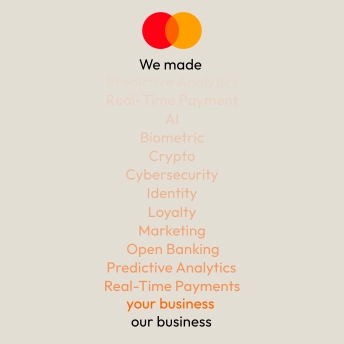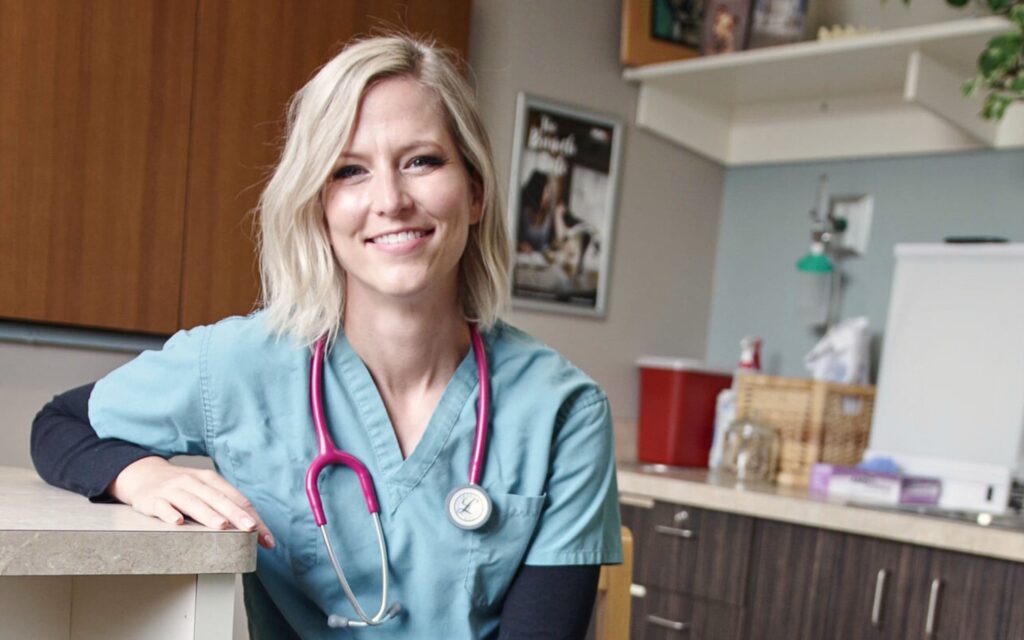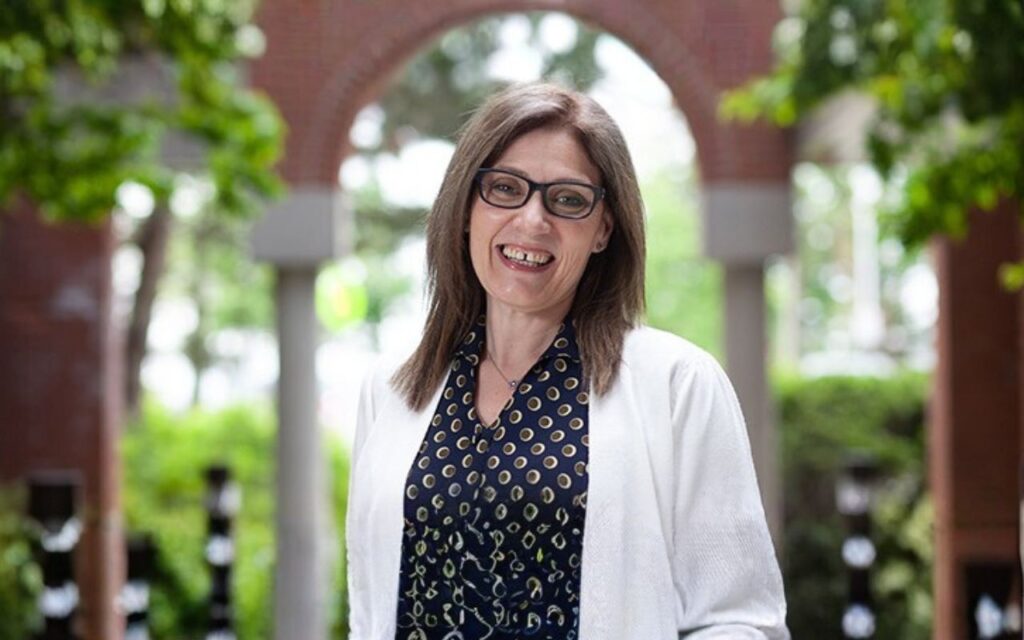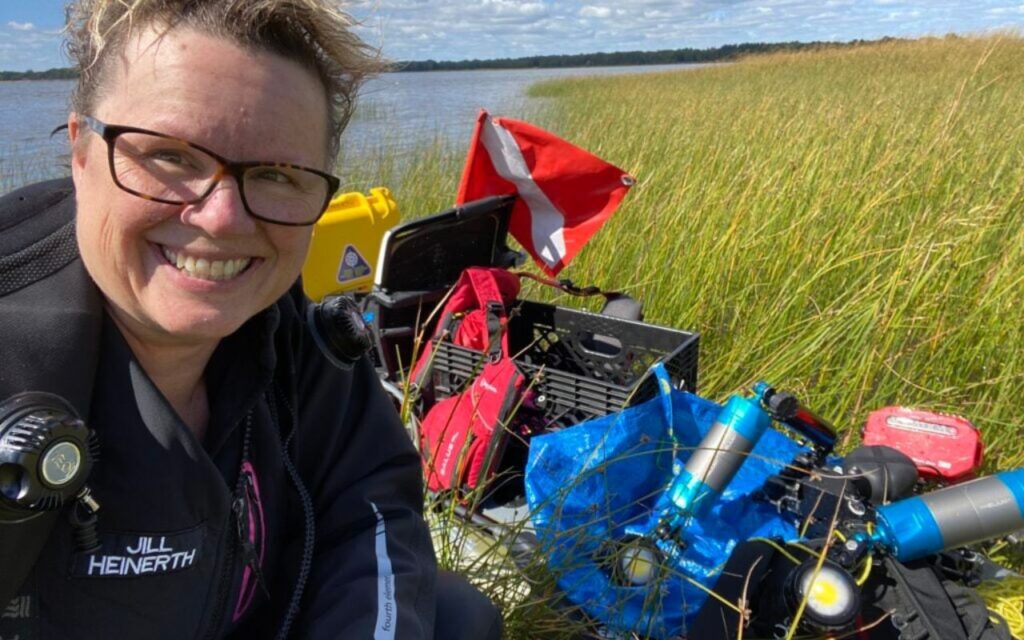
Catherine Clark: You’ve explored some of the most dangerous and remote underwater caves on the planet, including traveling over three kilometers into a single cave on one dive. What drew you to this kind of work? It’s not exactly a career path most high schoolers hear about. How did you get into this?
Jill Heinerth: You know, it’s funny. When I reflect back on my school time, when we did aptitude tests, young girls were told that one of about three careers were appropriate for them: secretary, homemaker, nurse, teacher. Those were the kinds of things we were told we had the aptitude to do. I didn’t have anyone to look up to in my personal sphere, so I turned to what many people do today: I looked at TV. Jacques Cousteau and the Apollo missions inspired me. Back then, since we all had only two TV stations, everybody was inspired by that common media experience. So if you saw it on Sunday night, by Monday morning at school, you’d be talking about it: “I’m going to be a diver.” It was something to aspire to.
Jennifer Stewart: I’ve got to be honest, I’ve never seen Catherine so excited for a guest. And I have so many questions about how you go from wanting to be a diver to actually being one. But we’ll try to keep it concise: You’re going underwater where death is a very real possibility. How do you approach fear? How do you get yourself mentally ready?
Jill Heinerth: Definitely. The places I go, nobody’s been there before. I’m literally writing the handbook or drawing the map for others to follow in the future. So I have to face a lot of unknowns, even changes in the environment in the moment. For me, it’s all about preparation for fear. I want to be the person who never runs from it – I’m willing to try anything once with the appropriate guardrails.
For me, it’s a problem-solving issue to begin with. Planning, preparation, and dedication to safety protocols are very important. But right before a dive, when I assess, “Am I ready?”, I literally take a deep breath and think about all the things that could kill me today. That might sound over the top, but it’s true. I have to think about my partners, my gear, my personal readiness. The last thing I ask myself is: Am I ready for self-rescue today, in this moment? And am I ready and willing to execute a buddy rescue if I have to? The answer to all those questions has to be yes. Then I strip the emotions away and set them on a shelf to return to later. When I exhale and descend beneath the surface, I am 100 per cent pragmatic; I’ve left the emotions behind.
Catherine Clark: Have you ever encountered a situation where the answer to that question was no?
Jill Heinerth: Yes, absolutely. And as I’ve gotten older, I’m a lot better at acknowledging that and acting on it. That’s the number-one rule for survivors in exploration: knowing when to abort. That might be right before the dive, or even three minutes in, after traveling across the world and spending tens or hundreds of thousands of dollars to conduct it. You have to be willing to say no. It’s burdensome, but necessary. Outside of cave diving, think about taking a risky proposal to your boss. You have to know when to engage and when to abort – and that lesson applies in life too.
Jennifer Stewart: You’ve said you’ve swum in places no human has ever been. More people have been to the moon than some of the places you’ve been. There’s a quote that resonated with both of us: “I swim through the graves of my friends.” What motivates you to keep going when some of your colleagues and friends have passed away in this exploration?
Jill Heinerth: It’s not easy, obviously. I’ve been involved in recovery activities after some of these accidents. It’s sobering; it brings PTSD and everything else. But when I take a risk, it has to be worth it. It’s not about adrenaline – cave diving isn’t a thrill sport like skydiving. It’s about data and new information. I take risks if they’re important for me, for humanity, for science.
When a friend loses their life in a similar situation, I have to deeply assess the accident and bring those lessons into my own life so I can return home safe. It’s a dance – it’s not easy.
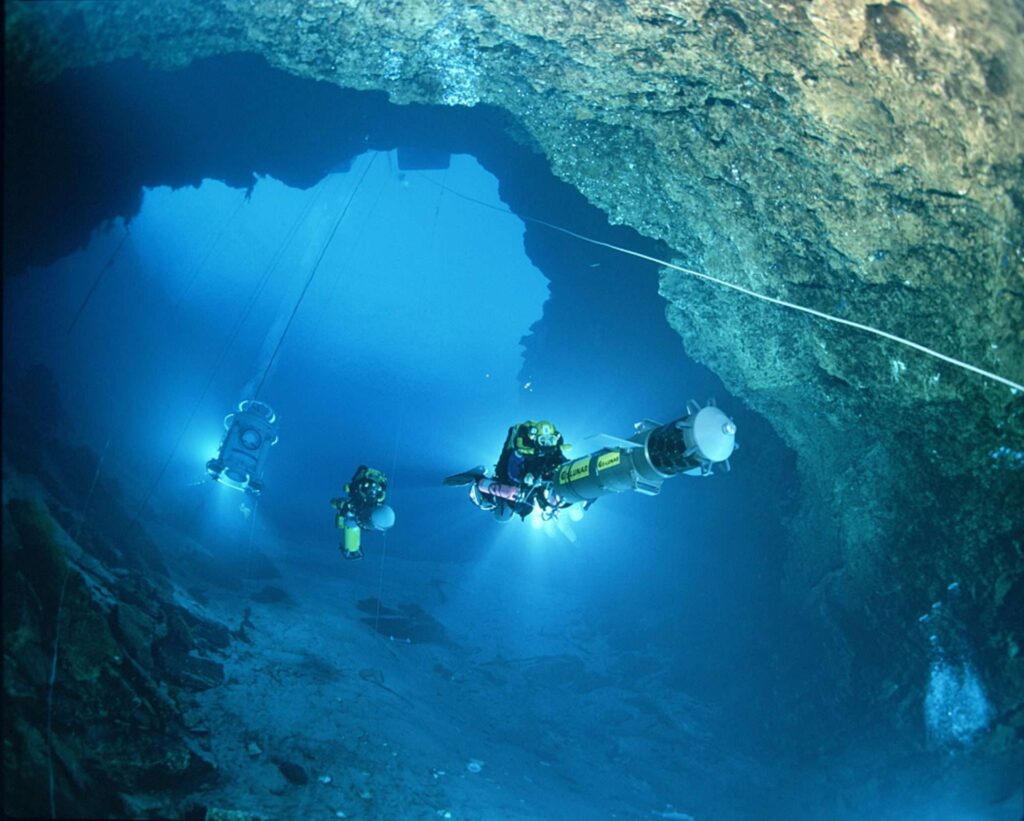
Catherine Clark: Jen and I watched some of the documentary, and we’ll put up a link for listeners because it’s incredible. Some scenes were so tight and claustrophobic that I had to look away. Can you describe what it’s like to be down there for those of us who have never experienced it?
Jill Heinerth: People often find it abstract: “Where are you swimming?” Sometimes I enter a hole in the ground in the middle of a forest, swim down a tunnel carved by rainwater beneath the water table. Other times, I’m in the ocean, entering a “blue hole” – literally a hole in the sea floor leading to a cave system. These places are completely dark; no light penetrates.
Once inside, some places are beautiful, some not. Some are silty, dark, and high-flow with zero visibility. Regardless, I’m swimming in the veins of Mother Earth, like a natural history museum. We can learn about Earth’s past climate, geology, and biology – life that exists without sunlight. Sometimes, I also encounter artifacts left by past cultures who saw these places as portals to another world. The opportunities for science, discovery, and artistic documentation are incredible.
Jennifer Stewart: What’s the greatest scientific discovery you’ve been able to contribute to through your work?
Jill Heinerth: I’ve worked with so many different scientists because this is all about collaboration. Specialist scientists can’t go where I go – I’ve spent my entire life specializing in life support, image acquisition, and technologies for underwater exploration. Together, we’ve found new species, from small cave‑adapted animals to never-before-documented subspecies of killer whales.
From small to big. That’s outside the cave, but inside the ice environment – because I do a lot of work in the polar regions as well. I think some of the most significant expeditions I’ve led were going inside icebergs in Antarctica for the first time and truly understanding what the geography of an iceberg looks like from the inside out.
I’ve also worked with advanced survey technologies that are now destined for space. So I kind of got to be that astronaut, in a way – except as an aquanaut, going into inner space rather than outer space.
Catherine Clark: Oh my gosh. How cool is it to have your job description be “aquanaut.” Can you talk about one of the most profound or unexpected moments you’ve faced while diving – something that changed your perspective personally or professionally?
Jill Heinerth: One of the most pivotal projects of my life was back in the late 1990s, working with the United States Deep Caving Team. We prepared for more than two years to use this never-before-demonstrated technology inside a cave system, and we made the world’s first accurate three-dimensional map of any subterranean space.
The mapping device I was driving back then is now a fully autonomous, artificially intelligent robot destined for space. That feels incredibly important. It was also the first time scientists began to regard us as valuable contributors – providing good data – whereas before, they just sort of looked at us and said, “What are you people doing, just out to get yourselves killed?”
And I’d say, “No, no, there’s much we have to communicate about this sponge of a planet that we all live on top of and never really think about the inside of.”
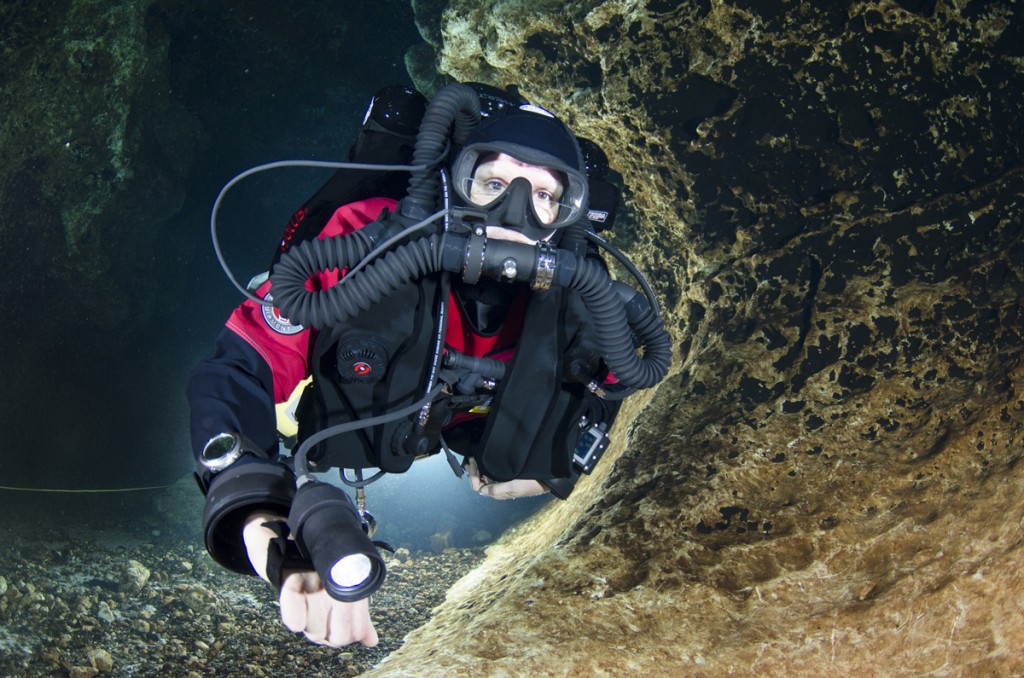
Jennifer Stewart: Are you seeing the impacts of climate change in your explorations?
Jill Heinerth: Yes. A woman of my age should not have seen so many changes on the planet. From my earliest dives on coral reefs, now returning to find them barren and lost, to the changes I see in the North – the sea ice changing from year to year – it’s frightening.
Even groundwater quality and availability is suffering. Groundwater is the cheapest way to get fresh, drinkable water, so we’re not only sucking it up at an unprecedented rate, we’re also not protecting it from surface pollution.
Catherine Clark: How do you communicate that to a wider audience – not just scientists – to ensure your work has a broader global impact?
Jill Heinerth: That’s the most important thing for me. I’m regularly presenting everywhere from corporate keynotes to school gymnasiums. I’ve traveled to every province and territory in Canada to meet with kids, especially underprivileged schools that wouldn’t normally have someone visit to talk about exploration and how to fulfill their dreams.
And in those moments, when I share the great stories of the places I’ve been and the science I’ve worked on, I get to shove a little truth in there too – opening people’s eyes to water literacy and climate change.
Jennifer Stewart: Have you experienced pushback as a woman in such an unconventional field? Any resistance or doubt along the way?
Jill Heinerth: It’s been a lonely time developing myself into the career I have today because I was laughed at as a young kid. And the sad thing is, it’s really easy to slam a door in a young kid’s face – and they’ll never reopen it again. It’s so important to encourage people.
I once paid for a special workshop to explore the possibility of becoming a commercial diver, and I was told there was no room for women in commercial diving – and that if I wanted to go train dolphins, there were other ways to do that. I’ve had those kinds of overtures, but I’ve also been bullied and even sabotaged on projects by people insecure about what my team and I were doing. It hasn’t been easy.
Catherine Clark: It’s a simple question about a complex reality – how have you navigated the bullying and resistance?
Jill Heinerth: When I was younger, not well. I was part of the very early internet when everything must be true, and it was difficult to figure that out. Eventually, I realized the bullying was never about me – it was about the bully, or the bully’s bully.
So I just went ahead and said, “Hey, watch me.” I’m going to continue to lead. You can follow, or not – your choice.
Jennifer Stewart: When you were a kid, you didn’t see anyone like you. Now there is a you. What advice do you give to young women dreaming of careers in exploration, science, or unconventional fields with few female role models?
Jill Heinerth: First, I tell adults: I want to be the woman I wish I had met when I was 10 years old. When I speak to a kid, I want to give them the messages I wish I’d gotten – that you can do anything. There will be social barriers, probably familial barriers, financial issues – but if you work hard and collaborate and connect with people who can help you find the way, anything is possible.
I get lots of notes from young girls telling me my book or my movie helped them do that, and that’s the greatest reward of all.

